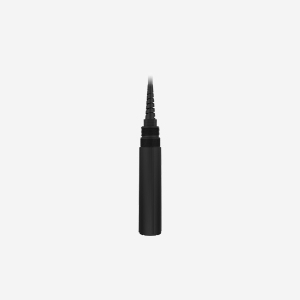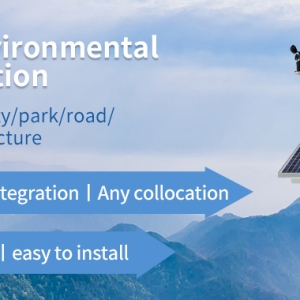Agriculture is the backbone of our society, providing food and livelihoods for billions of people worldwide. However, the increasing global population and changing climatic conditions pose significant challenges to farmers in maximizing crop yields. To address these challenges, technology has emerged as a powerful tool for empowering farmers. One such technology is soil sensor technology, which enables farmers to optimize resource management and make data-driven decisions to maximize crop yield. This article explores the importance of soil sensor technology, its applications in agriculture, and the benefits it brings to farmers.

Understanding Soil Sensor Technology:
Soil sensor technology involves the use of sensors to measure various soil parameters and properties. These sensors employ different technologies, such as electrical conductivity, moisture content, temperature, pH levels, and nutrient analysis, to gather data about the soil’s composition and condition. This data provides valuable insights into soil health, enabling farmers to make informed decisions about irrigation, fertilization, and overall crop management.
Applications of Soil Sensor Technology:
a. Irrigation Management: Water is a crucial resource for crop growth, and proper irrigation is essential for maximizing yield. Soil sensors provide real-time data on soil moisture levels, allowing farmers to optimize irrigation practices. By monitoring soil moisture content, farmers can avoid overwatering or under watering, ensuring that plants receive the right amount of water at the right time. This not only conserves water but also prevents waterlogging and nutrient leaching.
b. Nutrient Management:
Nutrients are vital for plant growth, and soil sensors enable precise measurement of nutrient levels in the soil. This information helps farmers apply fertilizers more efficiently and accurately, avoiding excessive or inadequate nutrient supply. By optimizing nutrient management, farmers can reduce costs, minimize environmental pollution, and promote healthy plant growth.
c. Soil Mapping:
Soil sensors contribute to the creation of detailed soil maps, depicting variations in soil properties across a field. This information aids in site-specific management, where farmers can tailor their practices based on the specific needs of different soil zones within a field. Soil mapping helps optimize seed selection, irrigation scheduling, and fertilizer application, resulting in improved yields and reduced resource wastage.
d. Disease and Pest Management:
Soil sensors can also assist in disease and pest management by detecting early warning signs. Some sensors can measure soil pathogens or indicators that may signify the presence of pests or diseases. This allows farmers to take proactive measures, such as adjusting crop rotation, applying targeted treatments, or implementing biological control methods, to prevent the spread and damage caused by pests and diseases.
Benefits of Soil Sensor Technology:
a. Increased Efficiency: Soil sensor technology enables precise and targeted resource management, reducing unnecessary inputs and optimizing yields. Farmers can make data-driven decisions regarding irrigation, fertilization, and pest management, resulting in improved efficiency and cost savings.
b. Environmental Sustainability:
By using soil sensors, farmers can minimize the use of water, fertilizers, and pesticides, reducing the environmental impact of agriculture. Precision agriculture practices, supported by soil sensor technology, promote sustainable farming methods, preserving natural resources and minimizing pollution.
c. Improved Crop Quality:
Soil sensors provide valuable insights into soil health, allowing farmers to create optimal growing conditions for crops. By ensuring the right balance of nutrients, moisture, and pH levels, farmers can enhance crop quality, taste, and nutritional value, meeting consumer demands and increasing market competitiveness.
d. Enhanced Decision-making:
Soil sensor technology provides farmers with accurate and up-to-date information about their fields. This helps them make informed decisions based on real-time conditions, mitigating risks and maximizing productivity. Farmers can adjust their practices according to specific soil conditions, leading to more effective crop management strategies.
Future Directions and Challenges: While soil sensor technology has proven to be a valuable tool in agriculture, there are still challenges to overcome. These include sensor accuracy, calibration requirements, data interpretation, and the need for interoperability among different sensor systems. Additionally, the cost and accessibility of soil sensors may pose barriers for some farmers. However, ongoing research and development efforts are addressing these challenges, with advancements in sensor technologies and data analytics.
Looking ahead, the future of soil sensor technology in agriculture is promising. Integration with other technologies, such as remote sensing, drones, and artificial intelligence, will further enhance their capabilities. Smart farming systems that combine multiple data sources will provide farmers with comprehensive insights into soil health, enabling even more precise and sustainable agricultural practices.

结论:土壤传感器技术已成为农业领域的游戏规则改变者,使农民能够最大限度地提高作物产量并优化资源管理。通过提供有关土壤参数的实时数据,土壤传感器使农民能够就灌溉、施肥和病虫害管理做出明智的决策。该技术具有许多好处,包括提高效率、环境可持续性、提高作物质量和增强决策能力。随着技术的不断进步和普及,土壤传感器技术将在塑造农业的未来、确保粮食安全的同时保护地球健康方面发挥越来越重要的作用。





